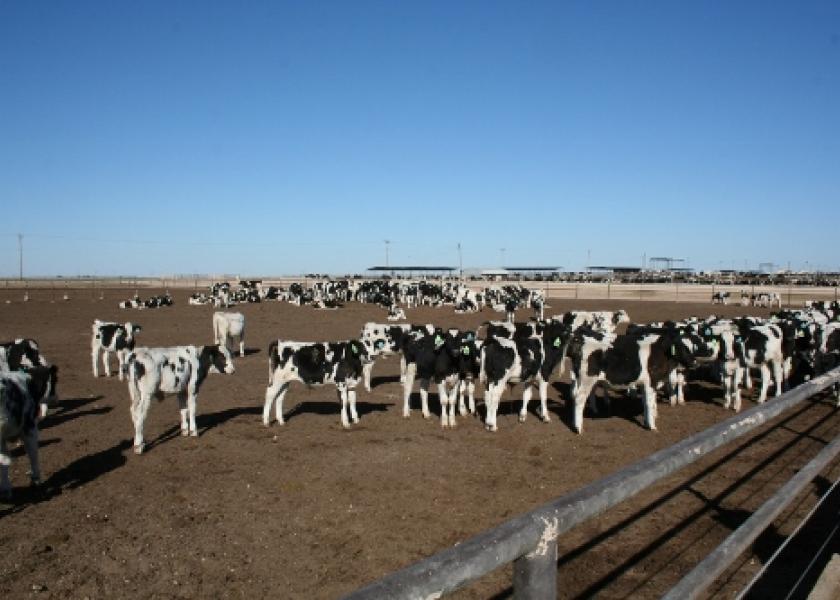Researchers Dissect Genetic Factors in BRD

Research and practical experience have shown a genetic component to the ability of individual cattle, or sire lines, to resist BRD pathogens. Identifying the genes involved and developing genomic-assisted selection tools for health, however, takes hard work and lots of data.
During the recent BRD Symposium in Denver, several presenters outlined research efforts to identify and quantify those genetic influences.
Washington State University animal scientist Holly Neibergs, PhD., presented on genomics and the relevance of genotype to BRD resistance or susceptibility. She conducts research in this field as part of the BRD Consortium, (BRDComplex.org). This group of researchers from multiple universities are conducting large-population studies to identify DNA loci associated with BRD, analyze interactions between host genomes and pathogens, establish heritability estimates and ultimately, develop selection panels for BRD resistance. Consortium researchers have collected phenotypic data on thousands of cattle from beef and dairy herds in different U.S. regions, using the University of Wisconsin calf-health scoring system, diagnostic testing and lung scores at slaughter. Then they’ve used genome-wide association analysis (GWAA) to analyze differences in and genotype frequency between BRD and healthy animals.
Neibergs notes that previous research has shown differences in morbidity and mortality between cattle breeds and between sire or family lines, supporting the idea of a genetic component to BRD. Heritability estimates for BRD susceptibility range from 0.02 to 0.29, depending on the population and the definition of the disease.
Commercial genotyping currently is available to predict BRD susceptibility in dairy cattle, and can be used in selection of replacement females, she adds. Wider variation in breed types and populations within breeds complicate the process in beef cattle. Consortium researchers have identified loci associated with BRD susceptibility across several populations of cattle.
“The identification of loci and genes associated with BRD provides the possibility to use genomic selection to reduce disease incidence and to better understand the host mechanisms associated with disease susceptibility,” Neibergs concludes.
Kristen Parker Gaddis, PhD, a geneticist with the Council on Dairy Cattle Breeding, also discussed the challenges and opportunities in genomic selection for BRD resistance in dairy cattle.
Parker Gaddis explained that an animal’s phenotype represents the sum of its genetic makeup and environmental influences. Producers traditionally have selected dairy replacements for milk yield, a phenotype that is relatively easy to measure and compare. Selecting for health traits becomes much more difficult, largely because the multi-factorial nature of BRD, ambiguity in case definitions and the large influence of environmental effects on BRD risk. Also, she notes that selection for one trait can have negative effects on others, such as increased milk yield corresponding with lower daughter pregnancy rates.
Relatively low heritability also complicates selection for health traits, she says. Take for example protein yield, where genetic differences explain about 30% of variation while environment affects 70%. In contrast, genetic differences account for only about 3% of the variation in mastitis susceptibility, while environment accounts for 97%. On the bright side, heritability estimates for BRD risk run somewhat higher than those for other health traits such as ketosis, mastitis, metritis and retained placenta.
While the effort will take time, Parker Gaddis says with enough genotypic and phenotypic data, researchers can develop genomic selection tools for cattle health. “Availability of genomic data dies not negate the necessity of quality phenotypes, in this case, records of BRD incidence,” she says. “Additional data also could be collected through the expansion of currently utilized termination codes and used in conjunction with records of direct health events. Selection for animals with improved BRD resistance is possible at the national level; however, collection of additional phenotypes remains a significant hurdle.”
For more summaries from the BRD Symposium and Academy of Veterinary Consultants Conference, see these articles from BovineVetOnline:
Genomic Tools for Understanding BRD
BRD in Dairy: Costs and Risk Factors







